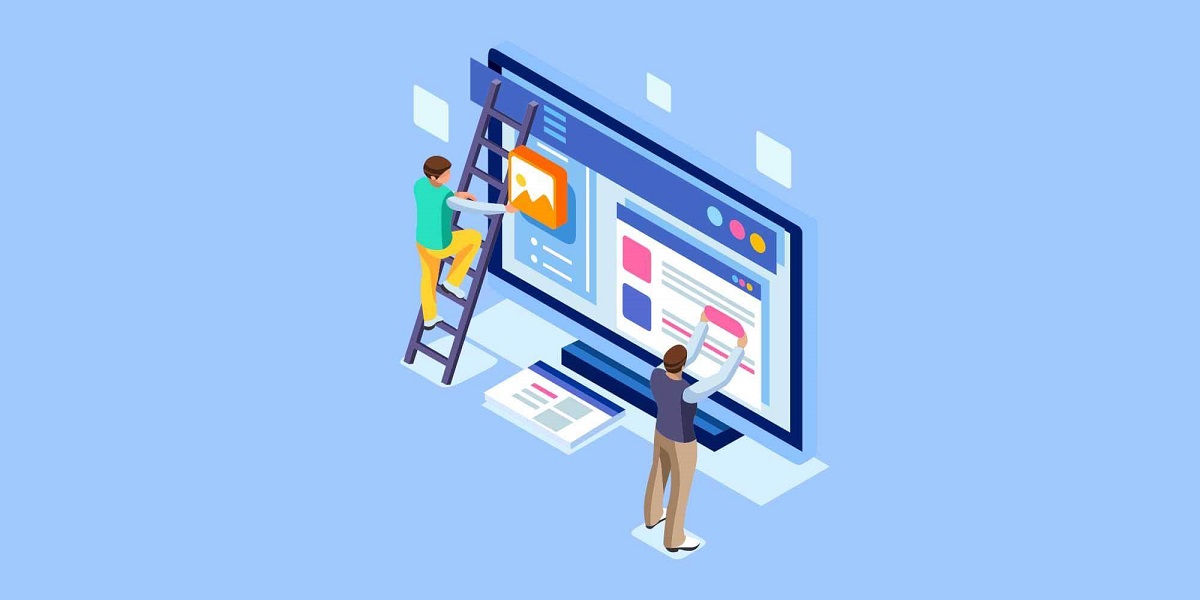
10 Most Effective Ways to Improve Your Website Design
- By Nathan
- 16-11-2021
- Web Design
Does your website design really work?
It’s easy to find out.
Visitors who have spent more than 3 to 5 seconds (which is a standard time telling that your web design is awesome) there means it’s worthy to attract and really valuable.
But, this is not the only way to determine whether it’s good or not.
Loading time, queries, transactions and interlinked pages visits/ navigation together with many other factors define its worth. With these, you can improve landing page conversion rate. If any of these things are not perfectly done, you may lose your customers. So, it needs some quick fixes.
Besides, an offbeat web template can also push you to the last in the competition. The rapidly changing world of technology can be the reason of getting less number of online clicks and visits.
Here is a roundup of some effective ways to improve your web journey
Decide-fixing errors or redesigning
Would you like to go on with the way it looks like or get it fixed?
Certainly, fixing errors or replacing it with trendy template is not a choice, but the need. You have to do it if you want to let opportunities come in.
Before going further, understand the fact that it’s the face of your business. The way it looks and offers customer journey shows how impactful it is to make your revenue-based dreams come true. Understand its significance and vitality.
Keep into account that re-designing from scratch can overburden you with a lot of expenses. Time is another precious thing that would run out with tons of opportunities.
Here, integrating improvement can let you to find a feasible solution. This option can really save your day and customers would be there with you.
Design it responsive
A responsive design looks optimised on different screen sizes. There are a number of mobile phones, laptops, desktops & many other smart devices that come with different screen sizes. With a responsive design, you can adjust the similar web design using codes corresponding to different sizes of screens. Simply put, it should best-fit to all screen sizes when it is viewed.
With the introduction of “mobile-first indexing” as a mandatory setting by Google, the web world has been embracing it as a standard because mobile-users are outnumbering. Non-compliant websites face penalty, down-ranking, low visibility and less number of customers.
So, it’s a high time to translate it into responsive if it is due. With it, a sudden up in the SERPs ranking will be the greatest delight that pay you out with good number of customers.
Make navigation simpler & easier
Navigation refers to the network of information resources or the options that allow them to jump through to where the visitor wants to explore more.
Typically, a website has three types of navigation-Main Navigation (the main menu options are represented as the main navigation), Local Navigation (it represents the subsets or sub-sections of a category) and Contextual Navigation (it’s a passport to different sections).
Think about prior goals or objectives with these navigations. It will help you to hang on your visitors for more seconds or minutes than what you expect. Put your best efforts here to make it as simple and easy as possible. Let your visitors move around your website using descriptive labels and optimised navigation bar. They would love to stay there longer than just 3 seconds.
Low the bounce rate with fast page speed
Do you have no time to optimise web page speed?
It’s necessary to optimise your site for mobile. Google data suggest that 61% of users are unlikely to get back to a mobile site if it’s troubling to open in three seconds.
So, think twice if you are not serious about fixing this error. For sustainability and overwhelming response through digital marketing efforts, resolve this matter. Otherwise, you will end up with less number of queries and the conversion rate would be minimal.
There are some tools that can help you out, for sure. So, fix it all quickly!
Guide to act using impactful call-to-action
How would you guide your visitors on your website?
It’s through Call-To-Action (CTA) button. People are unaware of what to do next. Let these buttons be their guide. It’s important to show them the right direction for translating their browsing as a happy buyer’s journey.
So, think wisely and improve your web design by locating these CTAs at the right place strategically, such as the top right of the navigation, below sections that need action to be taken and at the foot of the web pages. Put yourself in the shoes of your visitors. It will help you find the place where you would have maximized clicks through.
Choose their colour and actionable words after a deep thought. Using the words-discover, start, learn and interested etc. can prove game-changing & get more clicks than usual ones.
Integrate social media& proofs
Sharing is crucial when it comes to promoting business opportunities. You need platforms where your target audience spends most of the time so that you can reach it in no time.
Google search shows that Facebook has 2.8 billion active users whereas YouTube follows with 2.2 billion active users according to backlinko. These facts are enough to push you to integrate social media with your web design.
Facebook, Twitter, Instagram, LinkedIn, YouTube and Whatsapp are the most commonly used social networks where limitless opportunities seem waiting to grab them all.
Get this golden opportunity to maximize your user base, likes, followers and leads, which also boost your online presence.
The testimonials, reviews, ratings and stars in any video, content or icon typically rate your corporate experience. There is another side of this picture. These are amazing at gravitating customers towards your services/products. People find a reason to trust you by reading the viewpoints of previous customers. You come in a win-win situation if these social proofs are used rightly there.
Give the best shot to white space & work on distractions
Certain distractions on your web pages can devalue your promotional messages. Check for flash animations, stocky images and lengthy content.
Are these distracting your visitors?
Analyse and do the needful to offer a smooth web journey. Figure out where you want users to stay and take action on the page naturally. Sometimes, inconsistent spacing troubles a lot. Fix them all.
Another important thing is white space that attracts users a lot.
Research has shown that the white space in the left and right margins or in between paragraphs can increase understandability of users by almost 20%. They feel it more interactive and attractive.
It can be a perfect place to highlight your CTAs if you have enough white space.
Use visuals that are worthy
Visuals are amazing. We all like to explore them in any form like photos, videos, GIFs or abstracts.
They are attention-seekers on the page. Where the words have limits, the visuals reach the bottom of the heart. People are more likely to spend hours on browsing visuals instead of reading the content.
It all points to the fact that integrating great visuals marks a deeper impact. So, try to use images smartly, contextual, not-so-flashy and soothing. Always take a note of copyright images. Prefer stock-image providers that can be free, such as Pixabay, Canva and Envato etc..
Create customised illustrations
Stocked photos are good. But, custom illustrations are better.
A web design should be a hook where visitors would love to spend time and follow the CTA.
With cstomised illustrations, you can hit the bull’s eye. Its finest example is Google Doodle. If you have an in-house designing team, try to have an original illustration matching with your brand/ products/ services.
Do test before making it live
Your web design represents your company or brand. To minimise any scope for errors, you should be sure about its different components. Keep in mind that a highly optimised design can enhance conversion time and per page sessions.
It’s not easy to find meager errors. Here A/B testing comes in a big role. Create two variants of the similar web page and test their usability by measuring their performance. Google Analytics or ahrefs or any other tool can help you to come across glitches.
The issues can be related to the information served or the design updates. With the session duration, you can easily understand that it’s a content or design issue. Make changes according to search engine guidelines tomake web content SEO-friendly by optimizing. Also keep two variants of button colours, headers or any other type of content to see how changes impact the conversion rate.
Make it easier by using tools that are able to create A/B testing sample pages or multivariants for testing. Here, the battle does not end.
Monitor their performance on a weekly or bi-weekly basis using tools like Lucky Organge, Hotjar or any other ones. This monitoring will help you to determine things moving in a wrong direction and adjust accordingly on your web page.
Improving a website design can be easy by optimizing web pages, images, content, white space and focusing on SEO and responsiveness. With testing, the better template of your website becomes ready to roll out for winning visibility over the internet in no time.
Recent blog

Harnessing Social Media: Tactics For Powerful Marketing Success Achievement
Social Media | 25-07-2024
7 Hidden Secrets of MSI Laptop Boot Menu Key
Technology | 24-07-2024




